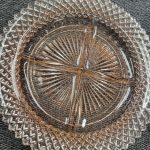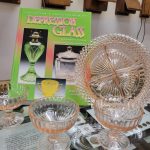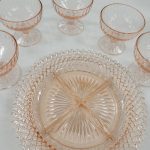 In the years during the Great Depression (1929-1939) money for many was scarce. Money that was available was used for the necessities of life and luxuries were few and far between.
In the years during the Great Depression (1929-1939) money for many was scarce. Money that was available was used for the necessities of life and luxuries were few and far between.
With demand for hand-blown glass pieces and fine china outside of the family budget, a new way of producing dinnerware sprang up. Often produced in the Ohio Valley region where the natural resources were available, glass pieces were mass produced using machinery and molds by more than 20 companies.
The resulting pieces became known as Depression Glass – clear or colored glass utilitarian items.

Reproductions have been made, but true Depression glass usually has tiny imperfections, notably tiny bubbles no bigger than the period at the end of a sentence. Pieces were often given away for free – a real treat for those who didn’t have money for nice things. Movie theaters would give glass sundae dishes away at the concession stand or you might dig a dish out of your box of oats. The hope was that you’d purchase other pieces to complete your set.
Although I was born many years after the Depression era, I can still remember reaching down into the laundry detergent powder to retrieve a piece of dinnerware. Depression Glass was often held dear to those whose spirits were lifted by it

and has been collectable through the years. A relish dish and custard dishes were found at a local rummage sale recently. The dish is in the Miss America pattern produced by the Hocking Glass Company (later Anchor Hocking.)

